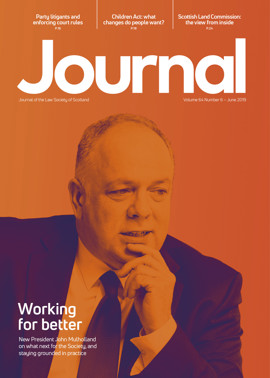When recognition is not enough
Three recent cases, one dealing with “genuine use” and two with brand extension outside its main area of use, show the difficulties that even the largest global brands can face when relying on their reputation in support of a registered or proposed trade mark. Trade mark owners should consider whether their brands are sufficiently protected in light of these decisions.
McDonald’s in a pickle
In January, fast food giant McDonald’s faced a dispute from Irish competitor Supermac’s, which claimed that the registered EU trade mark “BIG MAC” had not been put to genuine use in all its registered categories.
Few would claim never to have heard of the Big Mac. The Economist even publishes a “Big Mac Index”, using the burger’s price in different countries as a standardised method of comparing the purchasing power of national currencies.
It therefore came as a surprise when EUIPO released its decision that McDonald’s had failed to prove genuine use in this case. McDonald’s had relied mainly on advertising and promotional materials, but failed to show genuine customer engagement. To be compelling, there would need to be further evidence, such as statistics about goods sold as a result of the advertisements, or details of where and how the promotional materials had been circulated.
Another takeaway (sorry!) is the limited weight EUIPO gave to affidavit evidence. Most of the evidence presented by McDonald’s was generated internally, including written employee testimonies, website links and the advertising materials. Whilst not irrelevant, this would again need to be corroborated by an external source in order to be compelling.
McDonald’s loss of its “Big Mac” mark shows that even the largest global brands can be caught out by the requirement of “genuine use”. The burden of proof lies with the company relying on the mark, and a lack of high quality, independent evidence will not meet the grade.
Full time on “Dons Dram”
Closer to home, Aberdeen FC found itself relying on reputation in defence of an application to register “The Dons Dram” and “Dons Dram” as UK trademarks. The club, nicknamed “The Dons”, had partnered with a local distillery to create a blended whisky and intended to adopt that brand.
The application was opposed by Sandeman, which produces “Don Fino” sherry, holding UK and EU registered trade marks including “The Don”, “Don Fino” and other marks showing that text beside a masked, caped figure. According to Aberdeen, its nickname had been in use for almost a century, before Sandeman’s marks had been applied for. This, combined with the club’s domestic and international acclaim, meant that “Dons” or “The Dons” was readily associated in the public mind with Aberdeen FC.
UKIPO disagreed. It found that the vast majority of the public (even those interested in football) would make no association between Aberdeen and “The Dons”. Comparing the marks, the distinctive word “Don”, combined with the industry descriptive terms “Fino” and “Dram”, resulted in a likelihood of indirect confusion. For similar reasons, Aberdeen’s marks would also constitute passing off the “Don Fino” brand.
Aberdeen may feel aggrieved by the outcome. Sandeman failed on all grounds relating to the UK trade marks due to insufficient proof of use in Britain, and also failed to establish goodwill in its “The Don” brand. Even the successful “Don Fino” EU mark was only supported by evidence showing €7,732 worth of UK sales between 2010 and 2015.
The case illustrates that anything more than trivial goodwill is protectable. However, like McDonald’s, it also shows the difficulties of relying on reputation in trade mark disputes. Here, UKIPO found it more likely that the public would think Sandeman had expanded its business into whisky, than identify a connection between the Dons and Aberdeen FC.
Game of parodies
HBO, producer of TV phenomenon Game of Thrones, suffered defeats in opposing two marks it considered to infringe its registered EU trade marks.
The first was “Game of Vapes”, applied for under class 34, under which HBO held an earlier “GAME OF THRONES” EU trade mark. HBO argued that its mark benefited from substantial goodwill and reputation, particularly given its prevalence on a broad range of goods and merchandise.
Whilst UKIPO considered the marks visually and aurally similar to “a medium degree”, there remained sufficient difference that customers would recognise the applicant’s mark was “comedic play on Game of Thrones”. Game of Vapes was not a “natural brand extension” of “Game of Thrones”. Any similarity would therefore only result in association, not indirect confusion.
A similar outcome resulted from a figurative mark “Game of Stones”, applied for under class 32, featuring a Stonehenge inspired formation with the words “Wadworth” and “Game of Stones” underneath. The words “stones” and “thrones” were considered different enough to avoid confusion, both conceptually and aurally. There was no intention to deceive, as the product expressed a different concept to the “Game of Thrones” brand.
In both instances, HBO’s reputation was considered limited to the television programme and obvious official merchandising. Customers would realise that the allegedly infringing marks were intended to parody “Game of Thrones”, as opposed to being endorsed by HBO. To be infringing, there needed to be true similarity that would cause confusion. The show’s reputation alone was not enough to ensure protection.
Perspectives
Features
Briefings
In practice
- Tradecraft – one solicitor's experience
- Dear employer...
- Team building – for the Foundation?
- Accredited paralegal practice area highlight: conveyancing
- Accredited Paralegal Committee profile
- What's new for paralegals?
- Ask Ash
- Managing the risk of workplace stress
- Appreciation: Iain Alexander Macmillan
- Revealed – by your AML certificates






